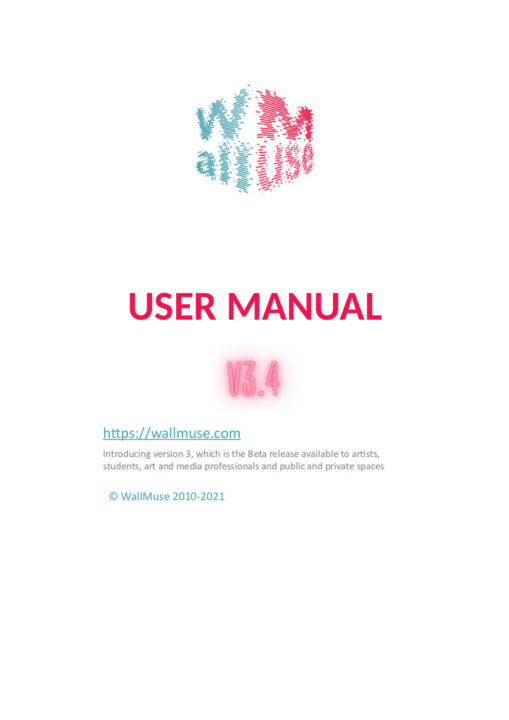VIDEO TUTORIALS
Add contents
Batch upload
Curate
USER MANUAL
CO-OPERATIONS
This space allows to ask questions, propose new themes and other specific requests. The forum is provided to co-ops to facilitate co-operations and co-curations.
Through the forum, arts professionals can request co-operations on new themes and approaches. This can concern the preparation of an exhibition or a deployment..
SOME GUIDELINES
Why outreaching is even more important today
Digital exhibitions in public spaces provides access to a broad public. A digital presentation implies a novelty aspect, somewhat comparable to installations, although channeled through displays for half the artworks not ‘born digital’. Digitisation can present different exhibitions and contents. It is therefore dynamic as well as contemplative, paced and suitable to various publics, including those less inclined to seek or visit such art or cultural experiences.
In opposition to a planned visit of a museum, exhibition or festival experience, here the public may be having diner or drinks, checking in, waiting or walking. Some viewers might be captivated by the unusual or may simply be art lovers, but in most cases, engagements are motivated by the new experience, which sometimes stimulates interrogations.
Estimates indicate a very high outreach capacity. However the viewer’s interest might differ as they are various forms and quality of attention:
- Most notice and appreciate,
- Audience attention period is linked to main activity,
- A few enquire to find out more information on the exhibition and artists.
- Planning the visit, psychologically prepares the visitor. In the case of art in a public space, attention can vary from surprise to appreciation, to not noticing at all.
- The artworks presented also convey emotions, and positive emotions can be a public curatorial choice.
- A survey conducted in a lobby indicated satisfaction as a new guest experience.
- The complementarity of online and physical exhibitions has been studied in terms of pre, in vivo and post visits, but here, the interaction involves people with “never”, “would” or “might visit” profiles, which is an advantage for exhibition curators and managers.
- We observed that digital exhibitions can facilitate and encourage conversations, which trigger other forms of social engaging, another possible public curatorial approach.
Supporting educational and cultural heritage projects
Educational programs can benefit from better circulation of artworks, even if restricted under copyrights. Higher budget commercial deployments can support educational uses with symbolic budgets. Also, discourses by students and groups can be shared, as well as their complementary inputs, media and comments.Specific advancements regarding the platform for a given project may benefit other future projects. There is an indirect build-up in approaches and methods, which is stimulating and innovative for future programs, also in light of their monitoring and evaluations.
Public awareness or lifelong learning approaches can also be addressed by valuing local, regional and national cultural assets. Municipalities, regions and nations have invested in such efforts and programs. But many don’t fund digital versions, often because of rights and technical barriers.


